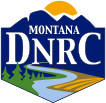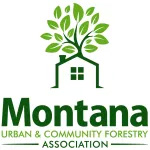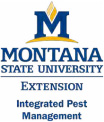Emerald Ash Borer

Figure 1: Emerald ash borer, Agrilus planipennis. Photo by D. Miller, USFS, Bugwood.org.
This fact sheet provides information on emerald ash borer biology and damage symptoms, what you can do right now, management recommendations if the EAB is found in Montana, other ash pests or non-EAB ash issues, and EAB look-alike insects in Montana.
A PDF version of this fact sheet can be found at the bottom of the page.
Contents
- Emerald ash borer Agrilus planipennis
- What’s at Risk in Montana?
- Trees at Risk
- Detection
- Damage
- EAB Life Cycle
- Common Issues in Montana Ash Trees Not Caused by emerald ash borer
- Prevention and Mitigation
- Other Ash Pests
- EAB Look-Alikes
- Symptoms of EAB Infestation
- What To Do if You Suspect Emerald Ash Borer
- Treatment
- Further Information

Figure 2: Green ash tree. Photo by J. O’Brien, USFS, Bugwood.org.
Emerald Ash Borer, Agrilus planipennis
The emerald ash borer (EAB) is a destructive wood-boring insect that has killed millions of ash trees in North America. It was first discovered in Detroit, Michigan in 2002, and it likely came from wood packaging material imported from Asia. It has become widely established in 35 states and five Canadian provinces. As of April 2021, it has not been detected in Montana. Unfortunately, it is easily transported on firewood, so Montana is always just one visitor’s mistake away from EAB establishing here.
What’s at Risk in Montana?
Ash are the most commonly planted trees in many Montana communities east of the Continental Divide. Ash species represent more than 40% of all publicly-owned trees in 20 Montana communities. The pest is also easily transported through infested firewood. Emerald ash borer can also naturally spread by flying approximately 2 to 12 miles per year. Ash trees that are killed by EAB become particularly brittle and liable to breakage, which then threatens property and public safety.
Trees at Risk
Emerald ash borer attacks all true ash species (Fraxinus sp.) and the white fringetree, Chionanthus virginicus. Mountain-ash trees are not true ash trees and they cannot become infested with EAB. Proper identification of true ash trees is critical. Ash trees have opposite, compound leaves with short-stalked leaflets. Leaflet margins may be smooth or toothed.
Detection

Figure 3: Green ash leaves. Photo by P. Wray, ISU, Bugwood.org.
Detection is difficult, so study the symptoms and be alert. The upper canopy of trees is attacked first, making it difficult to notice early stages of an infestation. Other factors can mimic symptoms of EAB. Ash trees in Montana may show evidence of decline and dieback for a variety of factors, none of which has yet been linked to EAB. The pest is often in the tree for up to four years before symptoms are visible. Green and purple prism traps are not yet proven effective for early detection nor mitigation of emerald ash borer.
Damage
The juvenile stage (larva) damages by feeding in the phloem and cambium, which interferes with the tree’s ability to transport nutrients and water. Ultimately, the branch and the trunk are girdled, causing dieback, canopy loss, and death of the tree. Infested trees will usually die within two to four years if left untreated.
Prevention and Mitigation
- Diversify tree species in the community in both new plantings and regular replacement trees.
- Remove unhealthy trees.
- Don't bring out-of-state firewood into Montana.
- Don't Move Firewood initiative.
Visual Guides
Select a title below to expand the page to reveal related images and information.
Step 1: Eggs
- Eggs laid on outer bark and fissures on trunk and larger branches, mid-June to August
- Eggs hatch in 14 days

Step 2: Larvae
- Larvae enter the bark and feed on phloem
- Overwinter as larvae in outer sapwood or outer bark


Step 4: Adults
- Adults emerge late May through June t mate
- Adults live 3 to 6 weeks

Step 3: Pupae
- Pupate during April and May
EAB Adult

- Metallic green
- Half an inch long (12mm)
- Slender, bullet-shaped
EAB Larva
- Flat-headed borer
- Up to 1.5 inches long (38mm)
- Bell-shaped abdominal segments
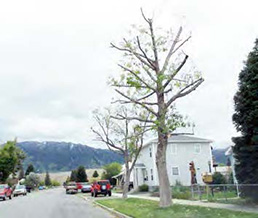
Photo: Montana DNRC
Topped ash trees.
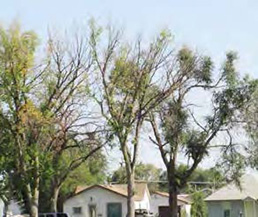
Photo: Montana DNRC
Dieback of ash trees (environmental).
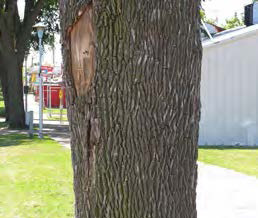
Photo: J. O'Bien, USFS
Physical damage from mowers, cars, etc.
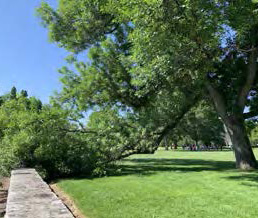
Photo: S. McConnell
Sudden branch drop.
Ash trees in Montana are commonly stressed by various pests and conditions including lilac/ash borer, western ash bark beetle, cankers/disease, drought, frost, herbicides, and mechanical damage. Homeowners can usually rule out these common issues prior to submitting samples.
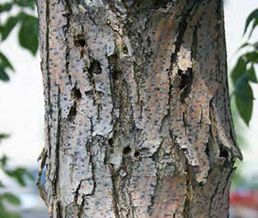
Photo: S. Katovich, Bugwood.org
Damage from lilac/ash borer.
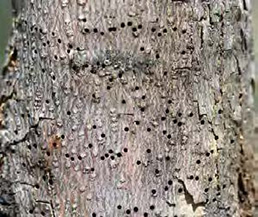
Photo: W. Cranshaw, Bugwood.org
Damage from Western ash bark beetle.
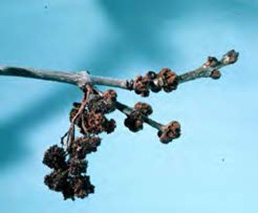
Photo: A. Munson, USFS, Bugwood.org
Ash flower gall mite.
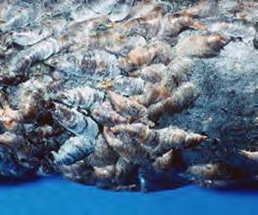
Photo: J. Davidson, Univ. Md, Bugwood.org
Oystershell scale.

Photo: V. Ferriera
Buprestis confluenta.

Photo: V. Ferriera
Chrysobothris sexsignata.

Photo: J. Moore
Chrysophana placida.

Photo: Pennsylvania DCNR Forestry, Bugwood.org
Cicindela decemnotata.
The photos below show common signs of an emerald ash borer infestation.
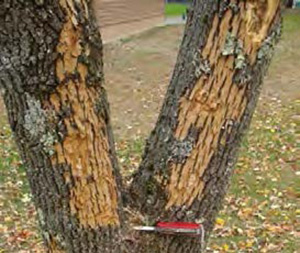
Photo: K. Law, USDA APHIS PPQ
Damage from woodpeckers feeding on EAB larvae.
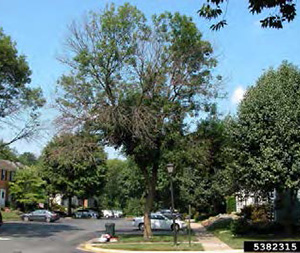
Photo: E. Day, Virginia Polytechnic Institute and State University
Thinning in upper canopy.
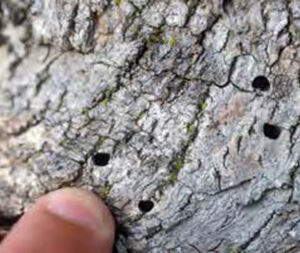
Photo: D. Herms, OSU, Bugwood.org
D-shaped exit holes in trunk.
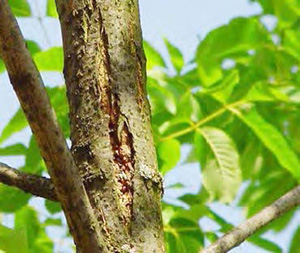
Photo: Michigan Dept. of Agriculture
Bark splitting from EAB infestation.
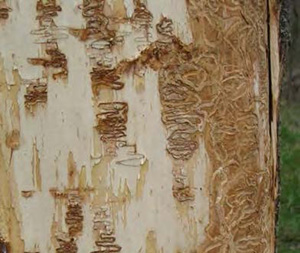
Photo: T. Kimoto, Canadian/Food Inspection Agency, Bugwood.org
Serpentine galleries under the bark.
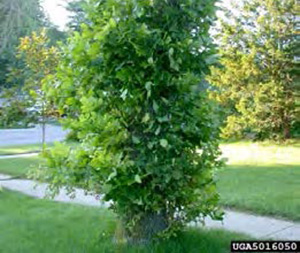
Photo: Pennsylvania DCNR Forestry
Epicormic branches and shoots at base of tree.
What to Do if You Suspect Emerald Ash Borer
If your ash tree exhibits dieback, refer to all possible biotic and abiotic issues in this guide.
For further help, contact a certified arborist in your area. If you suspect EAB on your property or have a suspected EAB insect sample, contact your local extension agent, the Schutter Diagnostic Lab at Montana State University, or the Montana Department of Agriculture.
Treatment
- It is unnecessary to do preventive chemical treatments until EAB is confirmed within 30 miles.
- Work with a certified arborist if infestation is suspected. Remove confirmed infested trees promptly.
- Chemical treatments can be effective when properly applied (see table).
Application Table
This table consists of 4 columns, row 1 contains headings. Each row of cells describes an active ingredient, its application method, the required applicator type, and the expected period of control. This table is meant only as a quick-reference, and it should not be a substitute for label directions.
|
Active Ingredient
|
Application Method
|
Applicator Type
|
Control
|
|---|---|---|---|
|
Emamectin benzoate
|
Micro-injection
|
Licensed professional only
|
2-3 years; 99% reduction in adults
|
|
Imidacloprid
|
Soil injection or drench
|
Licensed professional and homeowner
|
1-yr control; 58-80% mortality of adults and 57-68% reduction in larval densities
|
|
Dinotefuran
|
Soil injection or drench, trunk spray
|
Licensed professional and homeowner
|
1-yr-control; 58-80% mortality of adults and 57-68% reduction in larval densities
|
|
Azadirachtin
|
Trunk injection
|
Licensed professional and homeowner
|
1-2 years; affects EAB reproduction and development of young larvae
|
|
Pyrethroids (permethrin, beta-cyfluthrin, bifenthrin)
|
Trunk, branch, foliage spray (preventive)
|
Licensed professional only
|
1-2 years; affects EAB reproduction and development of young larvae
|
Further Information
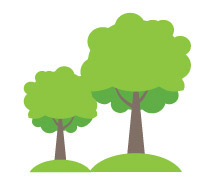
To learn more about the topics discussed on this page, contact the Schutter Diagnostic Lab. If you suspect an infestation on your property, contact your local extension agent, the Schutter Diagnostic Lab at Montana State University, or the Montana Department of Agriculture.
The Emerald Ash Borer guide is also available as a printable folded-pamphlet PDF (2MB), and as a standard format PDF (2.1MB)
Photos provided by Bugwood.org.
The Emerald Ash Borer Fact Sheet was created with support from Montana State University Extension Integrated Pest Management, the Montana Department of Natural Resources and Conservation, USDA-NIFA (award # 2017-70006-27155), the Montana Invasive Species Council, the United States Department of Agriculture, the Don't Move Firewood initiative, and the Montana Urban Community Forestry Association.
These recommendations are provided only as a guide. It is always the pesticide applicator’s responsibility, by law, to read and follow all current label directions for the specific pesticide being used. Due to constantly changing labels and product registration, recommendations are not meant to replace those provided on the label. Always consult the product label prior to application.
Common chemical and trade names are used in this publication for clarity. Inclusion of a common chemical or trade name does not imply endorsement of that particular product or brand of herbicide.

